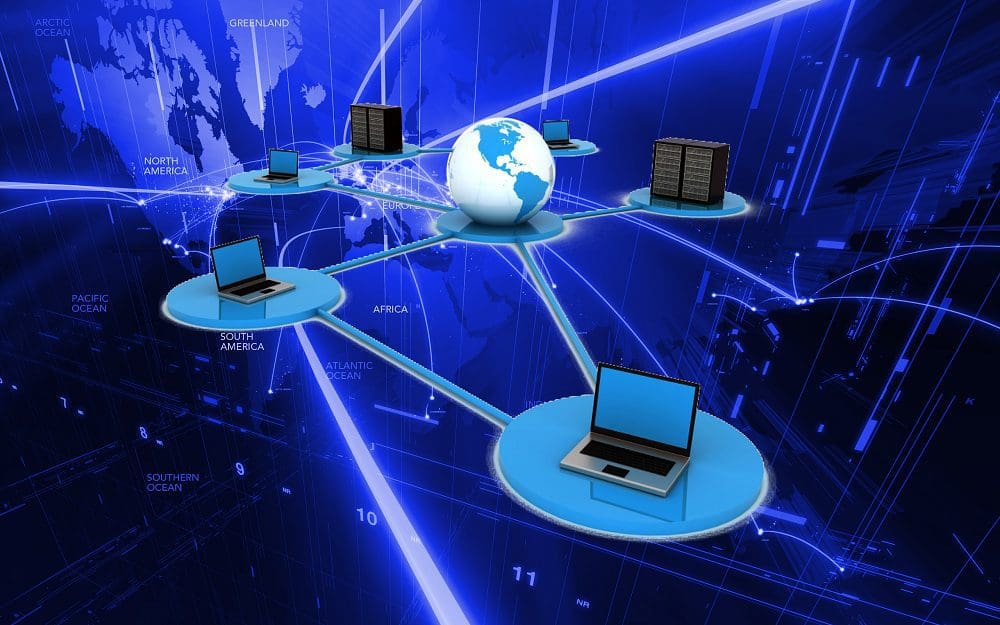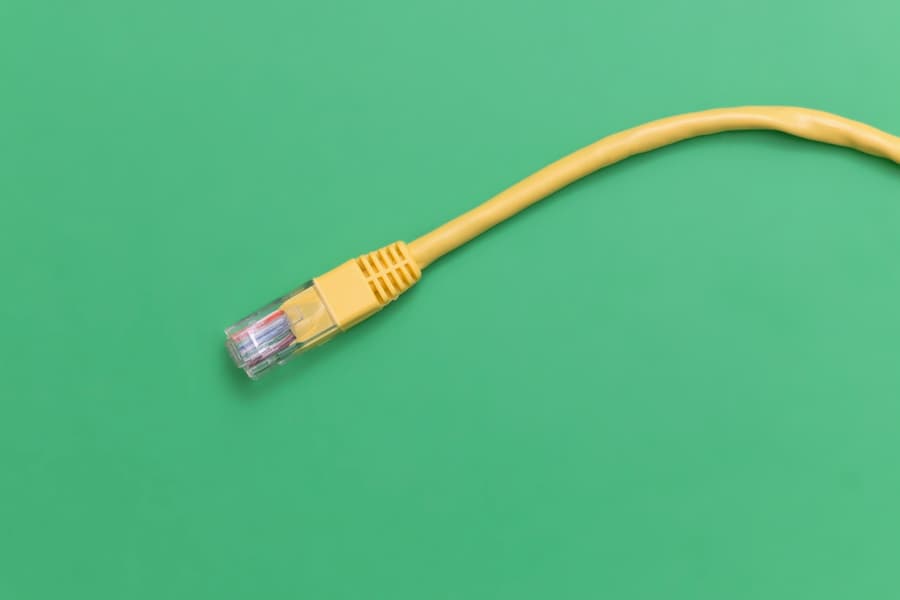A modern computer is a technological marvel. They run on tiny wafers of silicon, each etched with designs small enough to need measuring in nanometres. Vast amounts of data can be transferred in a blink of an eye, while data that would have filled a room just a few decades ago can now fit in the palm of your hand. As much as these machines are capable of, for the average user, a computer on its own is pretty limited. The key thing that makes a modern computer tick is a network connection, specifically to the Internet.
Contents
What Is a Network?
A network is a collection of computers and other computing devices that can communicate together in a shared but essentially closed system. These networks can be connected, allowing data to be shared even further. The Internet is the ultimate manifestation of this. It is the result of the connection of many networks worldwide.
You can have end-user devices such as a computer, laptop, or smartphone within a network. You can also have peripherals such as printers, smart home devices, and file servers. File servers can serve large and complex applications enabling web pages.
The typical layout for a home network is for each device to connect to a particular network device called the router. The router routes traffic internally around the network. It also sits on the boundary of the network and can communicate with other networks if connected. If those networks are connected to the Internet, every host on the home network can access the Internet.
There can be many “smaller” networks with large user devices in large networks that might be found in enterprise environments. These can then be connected via backbone networks which may only have routers on them, or they may feature servers too.
Connecting a Network
Connecting a network requires having some form of connection standard. In modern networks, most devices are connected via Ethernet or Wi-Fi. Ethernet is a wired standard using electrical cabling. Wi-Fi is a wireless standard using radio waves to communicate. Fiber-optic connections are also reasonably standard, though primarily in high-speed environments such as data centers, as they offer higher bandwidth limitations. Fiber-optic connections encode data in laser signals sent down a thin glass wire. Thanks to refraction, the light is trapped within the fiber.
Many other options are available, including using microwave signals to communicate with geosynchronous satellites. Point-to-point links can operate using visible or invisible light if they have a direct line of sight. There’s even a joke April Fools standard for “IP over Avian Carriers” standardizes a method of communicating via carrier pigeon, though we don’t recommend using this.
Considerations
Routing traffic over a single network requires designing an addressing system that can identify individual hosts. This process gets even more complicated when dealing with groups of networks. Routing protocols allow routers to communicate between themselves to inform others that they can route traffic to other locations.
Sometimes, you may be happy with sending data in plain text. This means that anyone in a position to intercept the data can trivially determine what was sent. If they intercept the data in real-time, they can modify it at will. For more sensitive data, though, security is needed. Encryption protocols allow two devices to negotiate a secure connection between themselves, even if the devices they’re communicating can’t be trusted.
Encryption also comes in handy if you want to set up a network where the devices are directly connected. A VPN or Virtual Private Network allows you to set up an encrypted connection between two devices. They can then communicate over this link as if it were a single connection rather than a series of connections. This can also connect large networks even if great distances separate them.
Key Performance Indicators
Bandwidth is generally the most quoted number when it comes to network performance. In general, that makes sense. The more data that can be transmitted over the network, the better. In some cases, though, another stat, latency, is equally or even more important. Latency is a measure of delay. Typically, it measures how long it takes for a tiny message to be sent from one device to another.
However, it can also be worth considering the bandwidth and latency when dealing with extremely large quantities of data. A car full of hard drives can quickly transport a large amount of data. Even though the latency is poor, the overall “transmission time” can significantly outperform Internet speeds. This has led to the phrase, “never underestimate the bandwidth of a truck full of hard drives.” Strapping microSD cards have also demonstrated this effect on carrier pigeons. However, complaints have been raised that this doesn’t comply with the joke standard mentioned above, which only standardized paper notes.
Quality of service, network congestion, and network resilience is more of an issue for network providers than home users. Even if the bandwidth is generally good, low quality of service could lead to network issues at key times. Transmission media like ethernet cables have a limit on how much data they can transfer in a given unit of time. If there’s a big spike in traffic, a connection may become overloaded, affecting everyone’s service. Occasionally, hardware and systems can fail. A resilient system can handle some failures with no major disruption.
Conclusion
A network is a collection of computing devices connected. Networks are typically physically local, though virtual networks can be configured over a more extensive network to make it seem like two physically distant networks are directly related. Networks require a set of physical and logical standards to facilitate communications. While some network configurations are performed ad hoc, most involve a router. The router is both the central and edge point of the network. All devices on the network can communicate with it, though they aren’t necessarily directly connected. The router may then provide access to other networks, typically the Internet.





thanks for the kind information